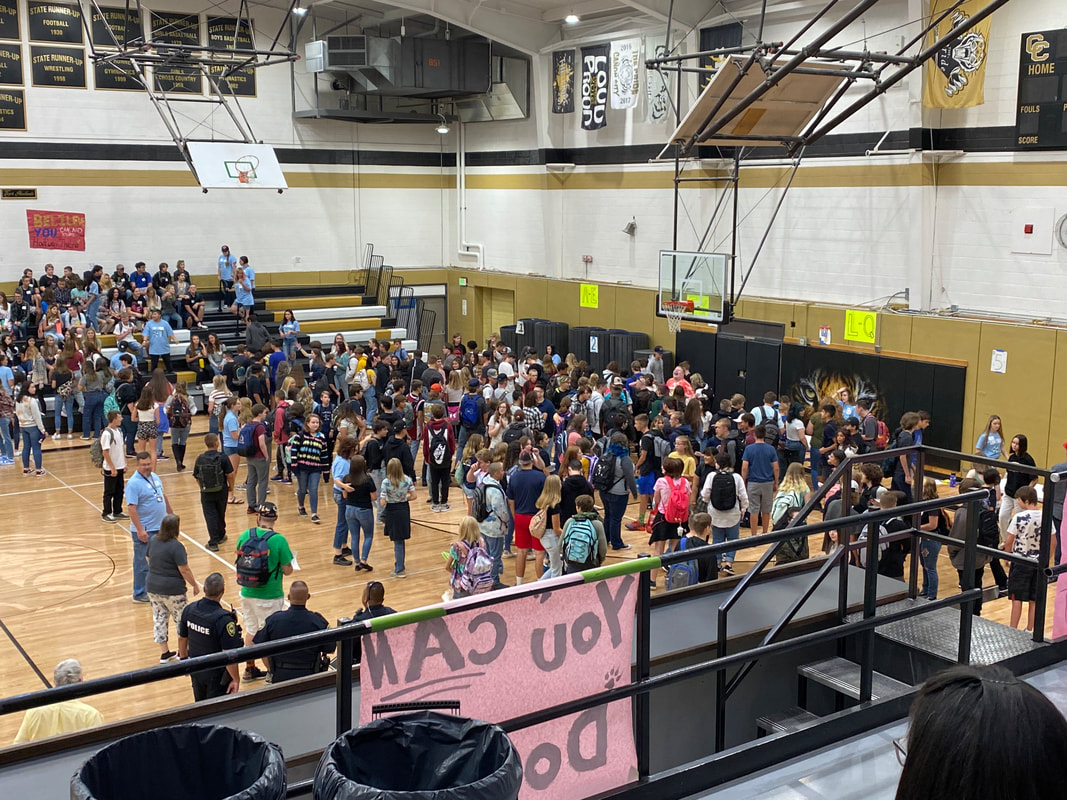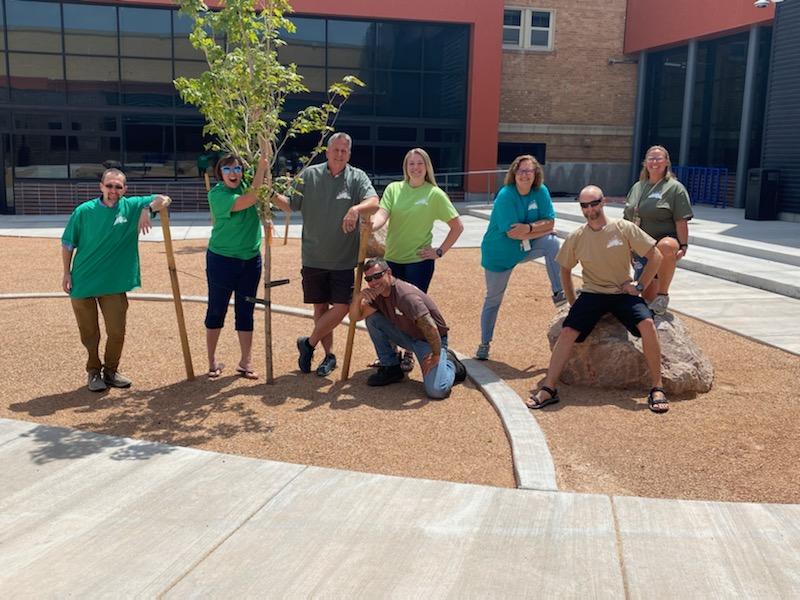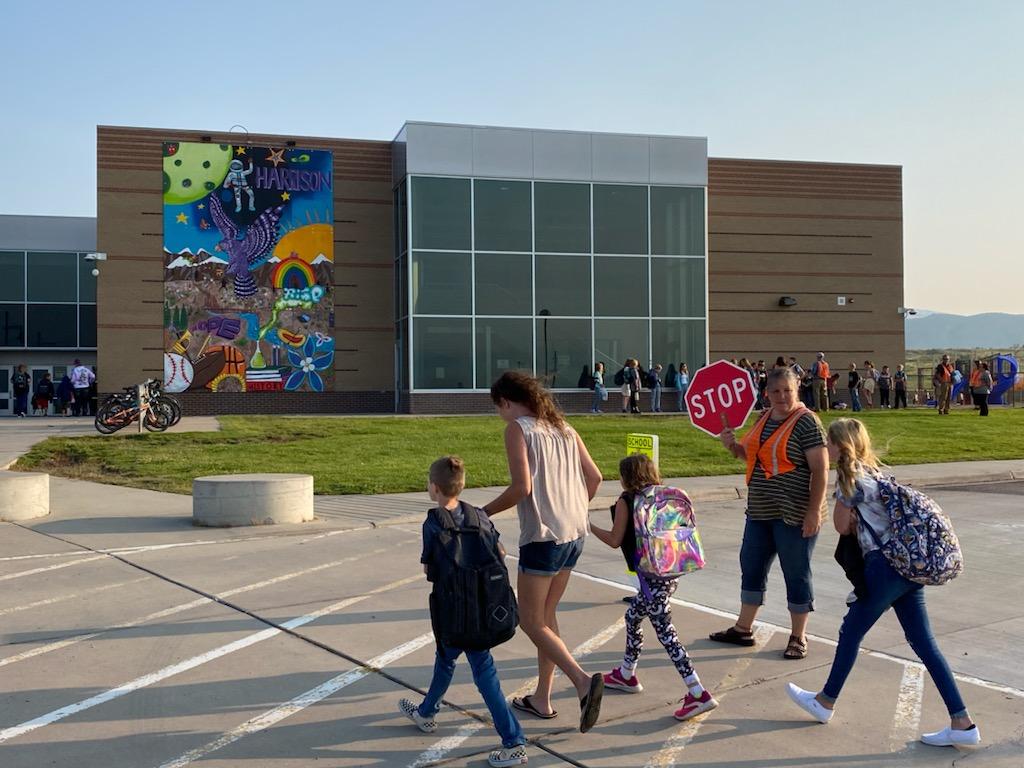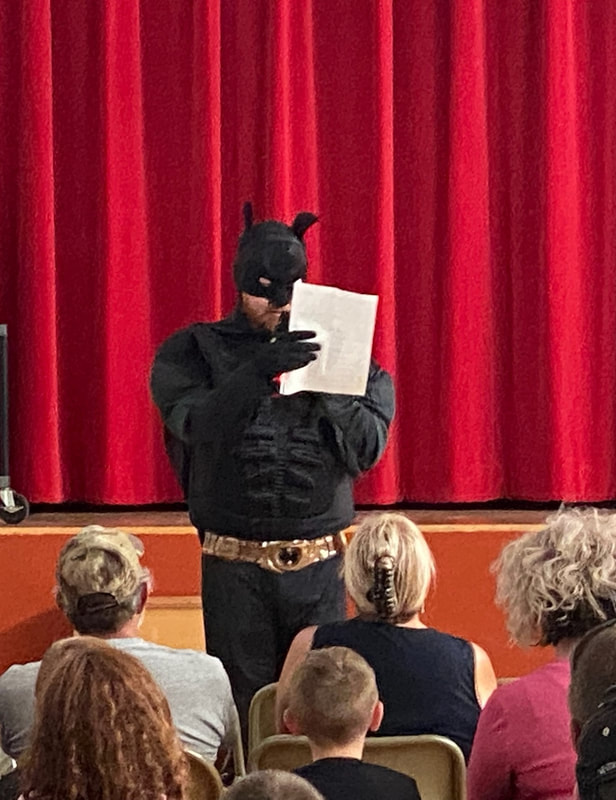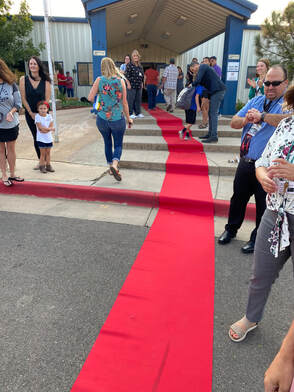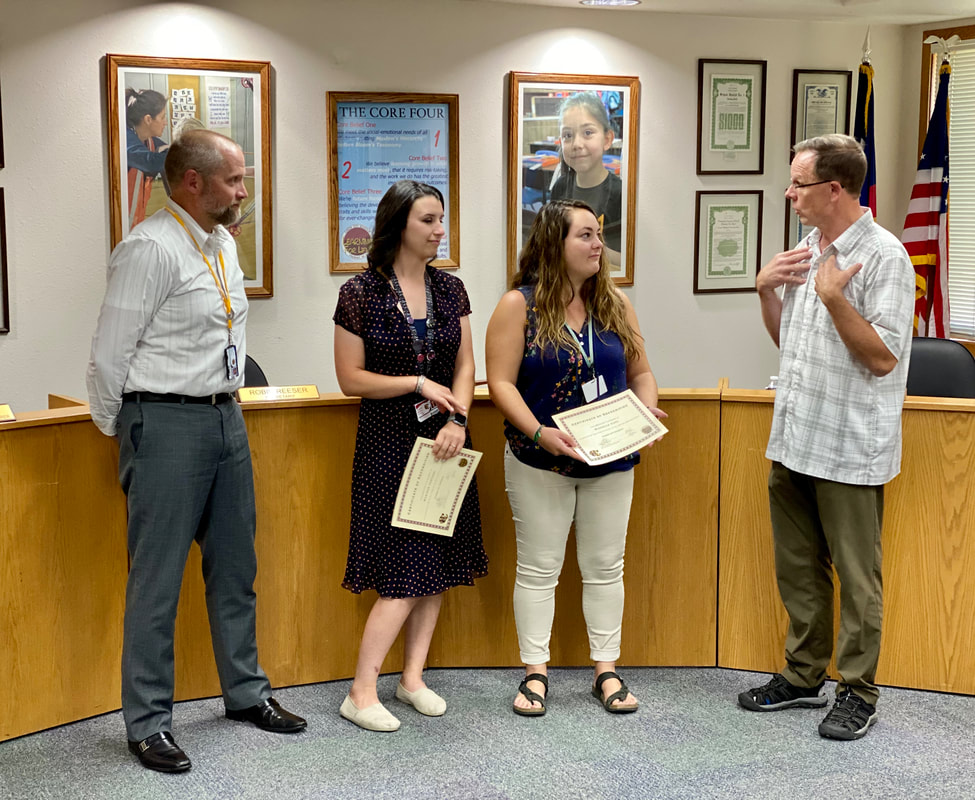Echoes from Cañon
Our Mission and Core Beliefs
The Cañon City School District is future-focused, providing innovative educational opportunities to successfully prepare all students to meet any challenge they may face.
1. We meet the social-emotional needs of all students, putting Maslow’s Hierarchy of Needs before Bloom’s Taxonomy.
2. We believe learning growth matters most, requires risk-taking, and the work we do in our schools has the greatest impact on this.
3. We’re future-focused, believing the development of certain traits and skills will best prepare our students for ever-changing careers.
4. We emphasize what is good for kids over the needs and comfort of adults.
The Cañon City School District is future-focused, providing innovative educational opportunities to successfully prepare all students to meet any challenge they may face.
1. We meet the social-emotional needs of all students, putting Maslow’s Hierarchy of Needs before Bloom’s Taxonomy.
2. We believe learning growth matters most, requires risk-taking, and the work we do in our schools has the greatest impact on this.
3. We’re future-focused, believing the development of certain traits and skills will best prepare our students for ever-changing careers.
4. We emphasize what is good for kids over the needs and comfort of adults.
Our Core Beliefs in Action
Staff worked hard to prepare for students to arrive for the 21-22 school year.
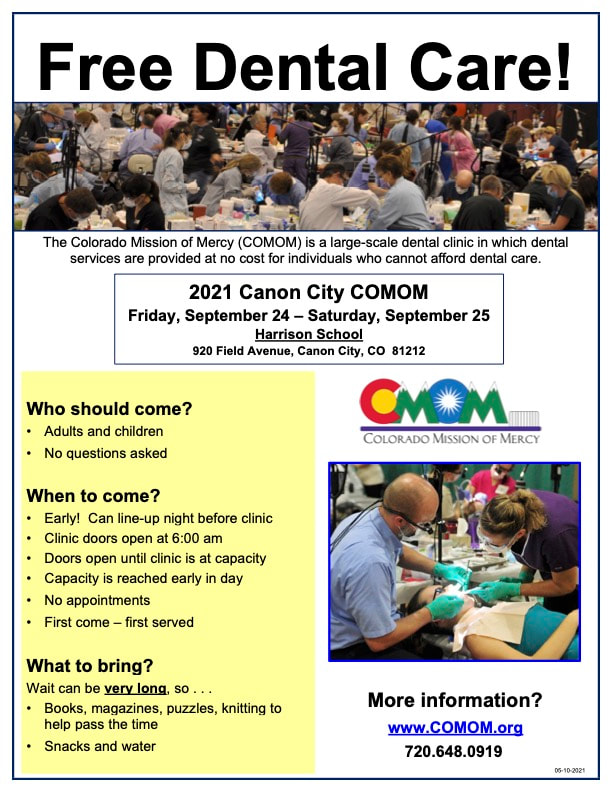
We’ve already experienced two full weeks of school! Kudos are due to district staff at all levels for accomplishing as seamless a start to the school year as we could have hoped for. We especially appreciate how buildings guided their own professional development, graciously welcomed and oriented students, and opened their doors for parents to visit. Our first core belief states we put Maslow before Bloom, tending to the social-emotional wellness of all students so we can also support them academically. The work done during they first two weeks of the school year is aimed at relationship developing, and this hits the bullseye when our target is making sure students are ready to learn.
If you look ahead in your school year calendar, you’ll notice we have no school at all grade levels on Thursday September 23rd and Friday September 24th. Though this will be a wonderful early fall opportunity for staff and families to enjoy some respite, the actual reason we've provided this break in our calendar is to allow a Colorado Mission of Mercy Free Dental Clinic to take place. Though the COMOM event will be on Friday the 24th and Saturday the 25th, the district needs all operations hands on deck to set up the event on Thursday the 23rd. We expect more than $250,000 worth of dental services will be provided free to Fremont County residents in need on these days.
For more information about the event, we encourage you to visit www.COMOM.org. Folks interested in volunteering in support of this event will find links to apply at this same site.
If you look ahead in your school year calendar, you’ll notice we have no school at all grade levels on Thursday September 23rd and Friday September 24th. Though this will be a wonderful early fall opportunity for staff and families to enjoy some respite, the actual reason we've provided this break in our calendar is to allow a Colorado Mission of Mercy Free Dental Clinic to take place. Though the COMOM event will be on Friday the 24th and Saturday the 25th, the district needs all operations hands on deck to set up the event on Thursday the 23rd. We expect more than $250,000 worth of dental services will be provided free to Fremont County residents in need on these days.
For more information about the event, we encourage you to visit www.COMOM.org. Folks interested in volunteering in support of this event will find links to apply at this same site.
The first weeks of school included special welcome ceremonies for students and families.
Our Future Focus
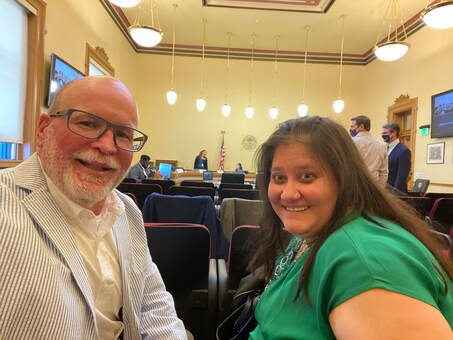 Harrison Schools Superintendent Wendy Birhanzel and I had the honor of testifying in front of the Interim School Finance Committee.
Harrison Schools Superintendent Wendy Birhanzel and I had the honor of testifying in front of the Interim School Finance Committee.
The most recent legislative session was quite positive in terms of education funding equity in Colorado. Many of the things we’ve been advocating across many years were accomplished, including additional funding to support at-risk student learning and a measure of mill equity that hasn’t existed this century. Along the way, a charge the legislature gave itself was to explore more effective ways to quantify at-risk student populations for the purpose of the school finance act. Currently Colorado, like most states, makes this calculation through the federal free or reduced lunch form collection process. Unfortunately, the COVID pandemic has made it difficult to collect these forms, in part because of the federal universal free meal policy that has been in place for more than a year has disincentivized families from doing so. Thus, the Colorado legislature is seeking ways to more accurately identify such children and get desperately needed resources to them. To this end, I travelled to Denver last week to testify about what this looks like in rural communities that lack large amounts of property wealth.
Applying Our Traits and Skills
On Monday August 23rd Cañon City High School teachers Madison Tortessi and Michelle Curl presented the amazing work they’ve completed that clearly outlines the Cañon City High School Capstone For All program. This makes the process web-based and simple to follow across the four year schedule students must follow to accomplish their culminating graduation project. After their presentation, Board President Shad Johnson and Superintendent Designee Adam Hartman honored them for excellence.
The CCHS capstone experience is designed to allow students to apply and demonstrate the extent to which they have developed the traits and skills we have focused on through our profile of a graduate.
The CCHS capstone experience is designed to allow students to apply and demonstrate the extent to which they have developed the traits and skills we have focused on through our profile of a graduate.
Looking Ahead
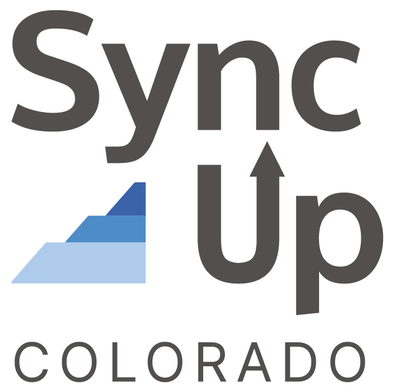
On Wednesday, September 1st, Cañon City Schools will present to the SyncUp Award Committee about progress toward our Fremont County Multidistrict Initiative.
The Fremont County Multidistrict Initiative is a partnership of the three Fremont County school districts, along with Fremont County Economic Development Corporation’s TECHStart and Emergent Campuses, Pueblo Community College, and Empower Schools.
During the presentation, we’ll share how Fremont County is home to the first-in-the-nation rural P-TECH program. This journey began 5 years ago in an effort to bring workforce development to our students. We now have one of the most successful internship programs in the state, and as a result, Cañon City Schools is held as a model district for rural Colorado schools by the Colorado Education Initiative. We now require internship experiences as a graduation requirement and are excited these opportunities are being shared county-wide.
Our SyncUp application has two purposes. Both are grounded in the ideal that rural students should have every opportunity offered their urban counterparts. Notably, our program is completely experiential. It offers to students workplace opportunities that cannot be simulated by a computer.
The Fremont County Multidistrict Initiative is a partnership of the three Fremont County school districts, along with Fremont County Economic Development Corporation’s TECHStart and Emergent Campuses, Pueblo Community College, and Empower Schools.
During the presentation, we’ll share how Fremont County is home to the first-in-the-nation rural P-TECH program. This journey began 5 years ago in an effort to bring workforce development to our students. We now have one of the most successful internship programs in the state, and as a result, Cañon City Schools is held as a model district for rural Colorado schools by the Colorado Education Initiative. We now require internship experiences as a graduation requirement and are excited these opportunities are being shared county-wide.
Our SyncUp application has two purposes. Both are grounded in the ideal that rural students should have every opportunity offered their urban counterparts. Notably, our program is completely experiential. It offers to students workplace opportunities that cannot be simulated by a computer.

Our second purpose is to manage each high schooler's workforce experience in a consistent and professional manner.
A driver of our program is to ensure every graduate explores their selected career before they earn their diploma. With 145 Fremont County business partners, nearly all work experiences are available. However, we realize as many as 15% of our students, according to a family poll conducted last year to capture the effects of COVID, have to work in the service industry, usually making minimum wage, simply to support their household. These kids are not laboring to buy a car or for money for social events. They work to help pay their family’s rent and to put food on the table for younger siblings.
While we can credit service industry experiences to fulfill a student’s graduation requirement, doing so does little to support their future aspirations. In a county where the Free and Reduced lunch population is 70%, ensuring students have a way to break the chain of poverty is a top priority. Thus, through the SyncUp program we are seeking to pay such students a stipend for completing their internship, allowing them to temporarily break from their service industry job to explore a potentially lucrative career.
In Fremont County, we partner with family businesses or tech upstarts that have only one or two employees. While each brings amazing career exploration opportunities, they can’t come to the table with funding for student stipends. Thus, the SyncUp grant would allow us to pay these stipends in the immediate future while we build a path to long-term sustainability.
One more aspect of our SychUp grant application will fund a full-time Internship Coordinator to work on behalf of FEDC TECHStart and Florence’s Emergent Campus. With an opportunity to support more than 140 interns annually, Fremont County’s emerging tech sector looks much different than those offered by major tech cooperations in the metro areas. Currently, we have 35 small businesses and upstarts who can each host from 1 to 5 students at a given time, providing them with direct access to entrepreneurs, CEOs, CFOs, and industry leaders. To manage this, we need a person focused solely on providing a consolidated approach to workforce development in today’s tech environment. To this point, we’ve relied on some incredible volunteers. However, since we seek to support ALL students in the community, volunteerism is unsustainable. Paying for a full-time coordinator will allow us to solidify processes and establish a precedent that can be sustained for all future student experiences.
Cañon City High School Principal Bill Summers has been key to the vision behind this gargantuan effort. He says, “If we continue to be successful on behalf of the students and workforce of Fremont County, Colorado will gain a valuable model for all rural communities. We always share knowledge and support other districts when we find success. We look forward to supporting everyone interested in following in our footsteps.”
A driver of our program is to ensure every graduate explores their selected career before they earn their diploma. With 145 Fremont County business partners, nearly all work experiences are available. However, we realize as many as 15% of our students, according to a family poll conducted last year to capture the effects of COVID, have to work in the service industry, usually making minimum wage, simply to support their household. These kids are not laboring to buy a car or for money for social events. They work to help pay their family’s rent and to put food on the table for younger siblings.
While we can credit service industry experiences to fulfill a student’s graduation requirement, doing so does little to support their future aspirations. In a county where the Free and Reduced lunch population is 70%, ensuring students have a way to break the chain of poverty is a top priority. Thus, through the SyncUp program we are seeking to pay such students a stipend for completing their internship, allowing them to temporarily break from their service industry job to explore a potentially lucrative career.
In Fremont County, we partner with family businesses or tech upstarts that have only one or two employees. While each brings amazing career exploration opportunities, they can’t come to the table with funding for student stipends. Thus, the SyncUp grant would allow us to pay these stipends in the immediate future while we build a path to long-term sustainability.
One more aspect of our SychUp grant application will fund a full-time Internship Coordinator to work on behalf of FEDC TECHStart and Florence’s Emergent Campus. With an opportunity to support more than 140 interns annually, Fremont County’s emerging tech sector looks much different than those offered by major tech cooperations in the metro areas. Currently, we have 35 small businesses and upstarts who can each host from 1 to 5 students at a given time, providing them with direct access to entrepreneurs, CEOs, CFOs, and industry leaders. To manage this, we need a person focused solely on providing a consolidated approach to workforce development in today’s tech environment. To this point, we’ve relied on some incredible volunteers. However, since we seek to support ALL students in the community, volunteerism is unsustainable. Paying for a full-time coordinator will allow us to solidify processes and establish a precedent that can be sustained for all future student experiences.
Cañon City High School Principal Bill Summers has been key to the vision behind this gargantuan effort. He says, “If we continue to be successful on behalf of the students and workforce of Fremont County, Colorado will gain a valuable model for all rural communities. We always share knowledge and support other districts when we find success. We look forward to supporting everyone interested in following in our footsteps.”
Other Voices
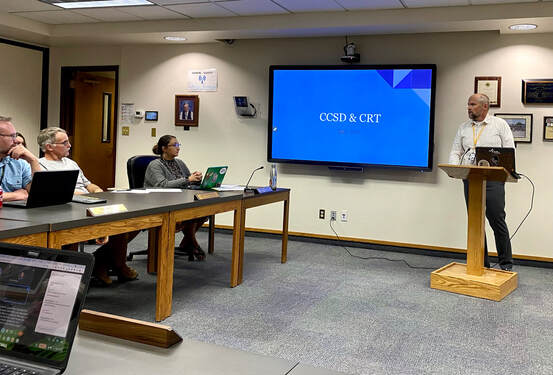 Mr. Hartman presented the district's position on Critical Race Theory at the August 23rd BOE meeting.
Mr. Hartman presented the district's position on Critical Race Theory at the August 23rd BOE meeting.
We’ve received inquiries about whether we teach Critical Race Theory in Cañon City Schools. At our August 23rd Board of Education meeting a community member asked us directly if we are teaching it.
At the meeting, Superintendent Designee Adam Hartman presented the district’s stance on Critical Race Theory. Unfortunately, the video sound from the meeting did not come out well, so we can’t share it. However, Mr. Hartman and I did our best to replicate his presentation in a presentation you can access at this link: https://youtu.be/TVjzFSr68E8
Also in response, I was invited by the Cañon City Daily Record to submit an article about CRT. Here is what I offered.
To address Critical Race Theory, it’s best to start by defining it.
At the meeting, Superintendent Designee Adam Hartman presented the district’s stance on Critical Race Theory. Unfortunately, the video sound from the meeting did not come out well, so we can’t share it. However, Mr. Hartman and I did our best to replicate his presentation in a presentation you can access at this link: https://youtu.be/TVjzFSr68E8
Also in response, I was invited by the Cañon City Daily Record to submit an article about CRT. Here is what I offered.
To address Critical Race Theory, it’s best to start by defining it.
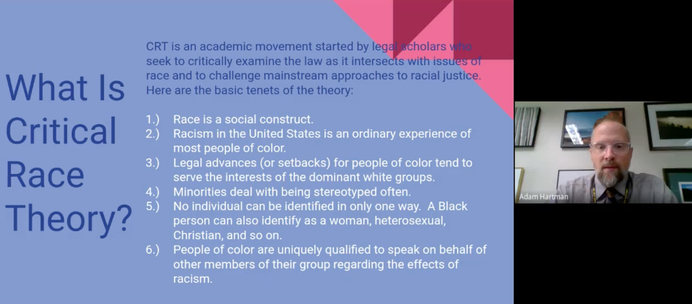
CRT is a college level academic movement begun in the 1970s by scholars examining law as it intersects with issues of race, challenging mainstream approaches to racial justice. The tenets of CRT are:
-Race impacts the way we interact socially
-Racism is a common experience for many people of color.
-Legal advances and setbacks for minorities tend to serve the interests of dominant ethnic groups.
-Minorities are often stereotyped.
-No individual can identify in only one way, meaning a person of color can also be a woman, heterosexual, Christian, and so on.
-People of color are uniquely qualified to speak about their experience with racism.
CRT asserts unfair racial outcomes are the result of complex, changing, and subtle social and institutional dynamics, as opposed to intentional prejudices.
Why has the teaching of CRT become a major issue regarding schools? Some feel a revision of American history is taking place. One who’s goal may be to eliminate certain parts of our curriculum and who’s aim is to make some children feel bad about their heritage.
I can assure you we aim to do neither of these things in the Cañon City School District.
In fact, despite 35 years in education, 9 teaching social studies and 26 as an administrator, I wouldn’t even know where to find a curriculum to implement the tenets of CRT in a K-12 system.
As one who has displayed a portrait of George Washington in every work setting, I have occupied, I must admit teachers face challenges when addressing American history. Washington is my hero because he led us to victory in the Revolutionary War, willingly stepped away from power when it ended, was unanimously elected first president under the 1787 constitution, then stepped away from power after two terms. His actions established the foundation for our nation’s greatness. Still, whenever I taught about Washington the issue of his being a slave owner inevitably arose. It was always a tough discussion to navigate. My instruction centered on his being a man of his time, a great one at that. However, no human is perfect, and the leadership he modeled is still worth celebrating and honoring.
Some folks concerned about CRT fear teachers even addressing such questions is historic revisioning. I last taught social studies in the spring of 1996, and the questions arose, and were addressed back then. In my opinion, good history teaching should help students celebrate the ideals of our Founding Fathers while acknowledging the ways in which America has struggled along the way to live up to its promises of liberty and justice for all.
In answer to the question, “are we planning to teach Critical Race Theory in Cañon City Schools?” Our answer is, unequivocally, NO. No effort is being made to teach the tenets of CRT concepts to our children.
What I can also tell you is I think Cañon City is a great place to live, work, and play. However, I recognize we have a checkered past in terms of race and religious relations. When we opened the time capsule from the 1924 section of Cañon City Middle School in March, shockingly we found within its contents a well-preserved set of the “Klan Edition” of the Fremont County Daily News.
One must not look hard to realize there’s little diversity in our community. In fact, this spring I met with several families of children of color choosing to leave our community. They’re doing so because they feel we don’t do enough to combat hate. As a result, we are focusing our efforts on helping children and families of all backgrounds feel welcome and safe. Not by revising history, nor by placing blame. Rather, by emphasizing kindness, civility, and fairness. We’re asking the questions, “what does a great Cañon City look like in terms of racial diversity, and what can the Cañon City School District do to support a great Cañon City?”
As we focus on this work, we invite each of you to help us.
Thank you all for listening once again!
George S. Welsh
-Race impacts the way we interact socially
-Racism is a common experience for many people of color.
-Legal advances and setbacks for minorities tend to serve the interests of dominant ethnic groups.
-Minorities are often stereotyped.
-No individual can identify in only one way, meaning a person of color can also be a woman, heterosexual, Christian, and so on.
-People of color are uniquely qualified to speak about their experience with racism.
CRT asserts unfair racial outcomes are the result of complex, changing, and subtle social and institutional dynamics, as opposed to intentional prejudices.
Why has the teaching of CRT become a major issue regarding schools? Some feel a revision of American history is taking place. One who’s goal may be to eliminate certain parts of our curriculum and who’s aim is to make some children feel bad about their heritage.
I can assure you we aim to do neither of these things in the Cañon City School District.
In fact, despite 35 years in education, 9 teaching social studies and 26 as an administrator, I wouldn’t even know where to find a curriculum to implement the tenets of CRT in a K-12 system.
As one who has displayed a portrait of George Washington in every work setting, I have occupied, I must admit teachers face challenges when addressing American history. Washington is my hero because he led us to victory in the Revolutionary War, willingly stepped away from power when it ended, was unanimously elected first president under the 1787 constitution, then stepped away from power after two terms. His actions established the foundation for our nation’s greatness. Still, whenever I taught about Washington the issue of his being a slave owner inevitably arose. It was always a tough discussion to navigate. My instruction centered on his being a man of his time, a great one at that. However, no human is perfect, and the leadership he modeled is still worth celebrating and honoring.
Some folks concerned about CRT fear teachers even addressing such questions is historic revisioning. I last taught social studies in the spring of 1996, and the questions arose, and were addressed back then. In my opinion, good history teaching should help students celebrate the ideals of our Founding Fathers while acknowledging the ways in which America has struggled along the way to live up to its promises of liberty and justice for all.
In answer to the question, “are we planning to teach Critical Race Theory in Cañon City Schools?” Our answer is, unequivocally, NO. No effort is being made to teach the tenets of CRT concepts to our children.
What I can also tell you is I think Cañon City is a great place to live, work, and play. However, I recognize we have a checkered past in terms of race and religious relations. When we opened the time capsule from the 1924 section of Cañon City Middle School in March, shockingly we found within its contents a well-preserved set of the “Klan Edition” of the Fremont County Daily News.
One must not look hard to realize there’s little diversity in our community. In fact, this spring I met with several families of children of color choosing to leave our community. They’re doing so because they feel we don’t do enough to combat hate. As a result, we are focusing our efforts on helping children and families of all backgrounds feel welcome and safe. Not by revising history, nor by placing blame. Rather, by emphasizing kindness, civility, and fairness. We’re asking the questions, “what does a great Cañon City look like in terms of racial diversity, and what can the Cañon City School District do to support a great Cañon City?”
As we focus on this work, we invite each of you to help us.
Thank you all for listening once again!
George S. Welsh
